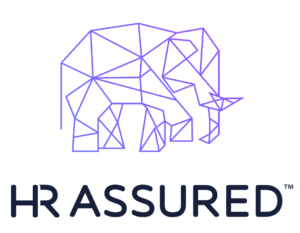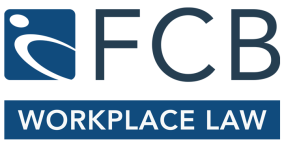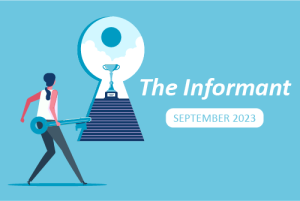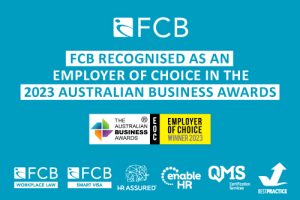Make them an offer they can’t refuse: retaining staff with a great employee value proposition
November 8, 2023The great resignation, the great reshuffle, the big quit, the great reimagination, or the great realisation…
These terms have been trending in the news since early 2021, and really, they all refer to the same thing: the increase in employees leaving their jobs en masse. As well as the financial impact of staff turnover on businesses, the Great Resignation has led to the unavoidable need for employers to reassess their employee engagement, and ultimately, their employee value proposition (EVP). With the great resignation still upon us, and the quiet quitters finding their way into our workplaces, there has never been a more important time to build a high-performance culture, increase staff retention, and learn how to attract the right staff.
Why? Because during the year ending February 2022, there were 13.4 million people employed in Australia, and of those 13.4 million:
- 1.3 million people (or 9.5 per cent of employed people) changed jobs – which was the highest rate of job mobility since 2012.
- The share of job mobility remained highest for professionals, at 22 per cent of those who changed jobs.
- 2.1 million people left or lost a job; and
- The annual retrenchment rate was 1.5 per cent which was the lowest annual rate on record (since 1972).
When we first started seeing the increase in employees leaving their jobs in early 2021, it was generally believed (and understandably so) that the increase in resignations was a direct side effect of pandemic chaos and uncertainty. Reports found that thousands of workers quit their roles due to COVID-19 safety concerns, or because their employers failed to provide appropriate remote-work support, something which employees have grown to expect. Many employees left due to their own refusal to be vaccinated in circumstances where their employers imposed those requirements in the workplace, and many more resignations came about as a result of ‘lockdown reflection’ and the desire to find more autonomy or meaning in their work. Of course, there were also resignations due to remuneration, and finding higher paying roles elsewhere.
Why, then, in a time where COVID-19 restrictions are seemingly being lifted across all aspects of work or life in general, are employers still seeing increases in resignations?
Despite a general prediction of a slowdown, reports show that not only are employees resigning at increased rates, but those who have not yet resigned plan to do so in coming months.
The numbers look like this:
- In 2021, PwC Australia surveyed over 1800 Australians in an effort to help business owners and employees understand what it is that their employees want as the labour market changes. The study, What Workers Want: How to win the war on talent, found that 38 per cent of Australian workers intended to leave their current employer during the next 12 months.
- The study also found 61 per cent of those who left an organisation last year intend to leave their current employer in the next year.
Worryingly, the survey also found that:
- Almost half of Australian employers have no intention of updating their employee value proposition to attract talent;
- 85 per cent of workers experienced mental health challenges during the pandemic and more than one-third consider their employer the main source of mental health support; and
- A quarter of workers said the reasons they join an organisation and the reasons they stay are not always the same.
Employee turnover is costly – and it’s affecting everyone
The key reasons employees leave their roles include feeling unappreciated, burnout, lack of flexible working options, and lack of career growth and engagement.
Employers need to respond to the fact that it is more efficient and cost effective to retain a high-quality workforce than having to recruit, train and onboard new employees. These processes can take upwards of months, and in some circumstances years to find the right person for a role or the right replacement employee.
Understand that employees today are continually looking for an optimal employer
Business leaders need to have at the forefront of their minds the ways they can retain talented staff. While we are continually hearing about the changes in employee attitudes and the increasing trend to pack up and move roles, it’s also important to celebrate those employers who are also shifting the way they manage staff operations. Many employers are continually considering and evaluating what is and isn’t working, and proactively implementing new retention strategies.
Successful businesses are the ones who realise that an employee does not only ‘choose an employer’ once (when they first accept a role). Employees today are continually assessing a company’s suitability and alignment with their own wants, needs and values. Employees make a choice when they accept or decline an offer of employment, when they choose to stay with the business throughout their employment, when they choose to ignore the LinkedIn message from a recruiter wanting to set up a time to discuss a great new role, and they also make choices about promoting the business as an Employer of Choice or when referring friends, family and potential colleagues.
An engaged team delivers enhanced productivity, reduced turnover, and better customer engagement, to name a few – which all adds to increased success and revenue.
Did you know?
| Highly engaged workforces increase profitability by 21 per cent.
|
Employee disengagement costs the Australian economy $2 billion every year.
|
Highly engaged teams sell 20 per cent more.
|
| More than 80 per cent of customers are retained by engaged workforces.
|
Highly engaged organisations have 41per cent lower absenteeism.
|
Disengaged workers have 49 per cent more accidents.
|
How to get your Employee Value Proposition right
EVP is the unique set of benefits that an employee receives in return for the skills, capability, and experience they bring to a workplace. Better EVP ultimately results in higher staff retention, with 65 per cent of job candidates reporting that they pulled out of a recruitment process due to their current workplace having high EVP.
High EVP also assists in attracting external talent. A survey conducted by Glassdoor demonstrated that 75 per cent of active job seekers were likely to apply to a job if the employer actively manages its employer brand.
Many employers ‘get it wrong’ with their EVP by centering it around tangible things such as bonuses, gifts, or paying for gym memberships.
Instead, EVP should be based on the intangible ‘human’ aspect of work – essentially, it is the promise a business makes to employees about how they will feel at work. EVP is ultimately the message that a business sends establishing why it is the right place for its employees and prospective candidates, not the tangible benefits it provides. It’s more than just bonuses and health perks – it also includes things like providing continuous learning and development opportunities, flexibility and autonomy, positive culture and diversity, being forward thinking, providing opportunities for feedback and implementing employee recommendations.
How to create an EVP that lets you stand out from competitors
When looking to refine or build your EVP, the first place to look is within the business:
- Why are potential employees attracted to the company?
- Why do existing employees think the company is unique?
- What do existing employees value most about working there?
- Why do employees stay?
- Why do employees leave?
Employee surveys, focus groups and exit interviews are a great way to gather this information.
Some of the most common factors sought after by employees include:
- Flexibility: providing flexibility for all aspects of work, not just where and when employees work.
- Facilitating personal growth: this extends beyond professional opportunities (e.g., helping employees pursue hobbies or interests).
- Holistic well-being: this covers both physical and mental well-being including actively encouraging uptake in well-being programs.
- Better connections: helping employees foster deep connections in and outside of work.
- Shared purpose: taking a stand on issues that matter to employees.
If your business continually adapts to employee requirements, you’re setting yourself up for success! Don’t be afraid to give FCB Workplace Law a call today for advice on setting up an excellent EVP to stop quiet quitting.


























